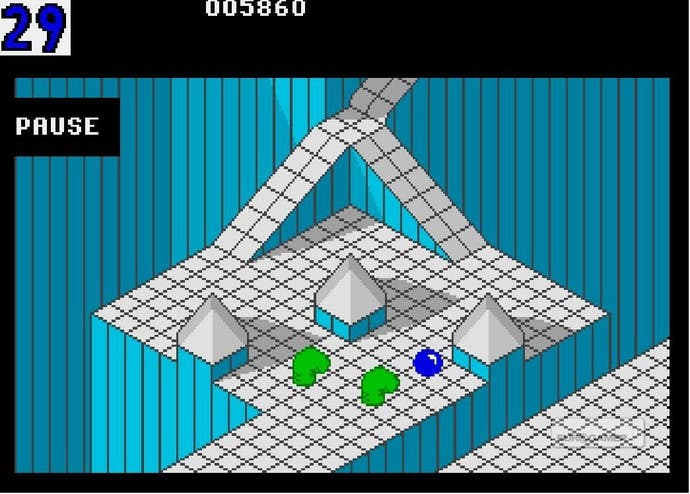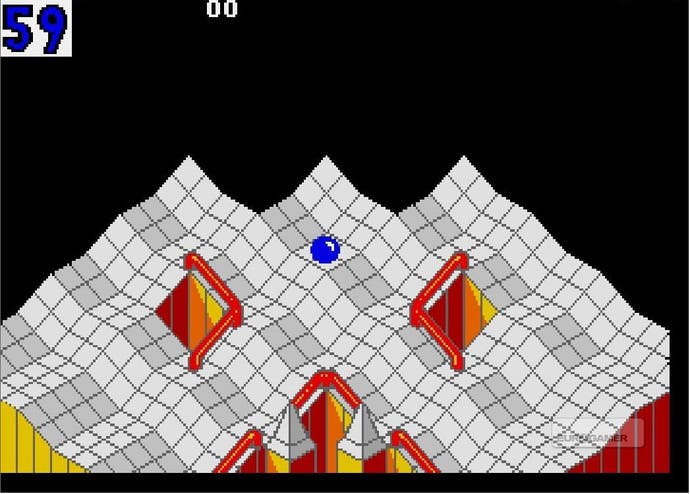Retrospective: Marble Madness
The six levels of Hell.
I'm really struggling to play Marble Madness. And not because it's incredibly difficult. It's just too much. Too much sensory overload, too many childhood memories evoked by a single sprite or sound effect.
It's a game I haven't touched since my hilariously inept 12 year-old attempts. That was 21 years ago. I'm surely better at it now.
I'm no better at it now.
Atari's Marble Madness was originally developed for the arcades and became a big hit. Floppy-haired kids were challenged to guide a marble through Escher-ish mazes using a trackball, and encouraged to seek independent glory.
Such was the game's success it received a port to every gaming device imaginable. It reached me via my father's Atari ST, about three years after the original release.
I love my dad very much, but his crime of getting an ST instead of an Amiga has been hard to forgive. And I'm not dragging up the tedious argument over which machine was better (I believe the correct answer is n, where n = the machine you owned). I'm lamenting the accompanying magazines.

There was, for a time, incredible multiformat mag Zero. But when it came to specialist publications, to say the ST fell short is like describing the Grand Canyon as quite a big hole. The Amiga had the greatest gaming magazine of all time, Amiga Power - the guidebook followed by anyone worth reading today. The Atari had, er, ST Format.
I'm sorry to any Format writers out there, but to a 12 year-old in 1989, that was about as cruel a thing as that year's cancellation of Doctor Who. I remember scouring the pages of features about making boring music or drawing a sphere in DPaint, trying to find something silly, something naughty. I can recall one slightly cheeky feature about how to clean your mouse's ball.
But I still loved my ST. To compensate for the above loss I did at least have the bee mouse cursor, which no stupid Amiga owner could compete with. When something was loading we Atari owners didn't see a boring egg timer - we saw a busy buzzy bee. A bee that I would buzz around the screen, while singing the "Buzzy Bee" song. ("Ooh, buzzy buzzy bee, buzzy buzzy bee, buzz bu- oh it's loaded.")

Which doesn't in the slightest bring me back to Marble Madness. As evocative as that bright green desktop and its accompanying insects are the isometric, minimalist mazes that I could no more roll a marble through then than now.
The game was famous for its difficulty - praised for it, in fact. Arcade gamers liked to be challenged, to empty every ten pence from their wallet into the machine so as to suffer as much as possible, and afford no bus. And those sadists ensured that the home computer ports were just as tricky.
In a world before physics, games were allowed to invent their own laws. Marble Madness's marble is sort of affected by the more natural laws, accelerating as it goes down slopes, coming to a stop after it's rolled so far on a flat surface.

